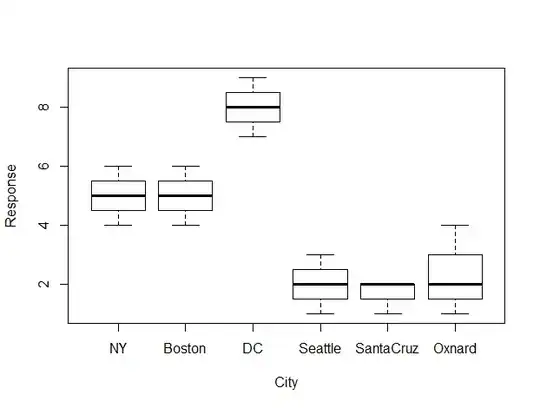At the time of writing, this is a very software-heavy answer. The following is R code, relying on the emmeans package to analysis custom contrasts for a model fit with the ordinal package. I suspect that emmeans will properly handle custom contrasts for supported models even if the design is more complex.
One thing to note here is that the classic way to analyze custom contrasts in R is with aov that limits the number of contrasts to the degrees of freedom in the e.g. treatment effect. However, emmeans and multcomp allow for any number of custom contrasts, and often a p value correction is applied to account for the multiple hypothesis tests.
Sources, with the caveat that I am the author of these webpages:
http://rcompanion.org/rcompanion/h_01.html
http://rcompanion.org/handbook/G_07.html
### Install packages ###
if(!require(ordinal)){install.packages("ordinal")}
if(!require(car)){install.packages("car")}
if(!require(RVAideMemoire)){install.packages("RVAideMemoire")}
if(!require(emmeans)){install.packages("emmeans")}
### ###
Input = ("
City Response
NY 4
NY 5
NY 6
Boston 4
Boston 5
Boston 6
DC 7
DC 9
DC 10
Seattle 1
Seattle 2
Seattle 3
SantaCruz 1
SantaCruz 2
SantaCruz 2
Oxnard 1
Oxnard 2
Oxnard 4
")
Data = read.table(textConnection(Input),header=TRUE)
### Specify the order of factor levels. Otherwise R will alphabetize them.
Data$City = factor(Data$City, levels=unique(Data$City))
Data$Response = factor(Data$Response, ordered=TRUE)
boxplot(Response ~ City,
data = Data,
ylab="Response",
xlab="City")

### You need to look at order of factor levels to determine the contrasts
levels(Data$City)
### "NY" "Boston" "DC" "Seattle" "SantaCruz" "Oxnard"
library(ordinal)
model = clm(Response ~ City, data = Data, threshold="equidistant")
### Normally you don't need threshold="equidistant"
library(car)
library(RVAideMemoire)
Anova(model,
type = "II")
### Note that you shouldn't use car::Anova with `ordinal` models,
### unless you use the modification in the `RVAideMemoire` package.
library(emmeans)
em = emmeans(model, ~ City)
### Hypothesis I
Contrasts = list(East_vs_West = c(1, 1, 1, -1, -1, -1))
### The column names match the order of levels of the treatment variable
### The coefficients of each row sum to 0
contrast(em, Contrasts, adjust="sidak")
### contrast estimate SE df z.ratio p.value
### East_vs_West 23.4 6.03 Inf 3.878 0.0001
### estimate is sided. That is, it can be negative or positive.
### Here, obviously, East has higher values than West, and the estimate
### is positive.
### For a one sided test, I guess you should just divide the p-value by two.
### Hypothesis II
Contrasts = list(NY_vs_Boston = c( 1, -1, 0, 0, 0, 0),
Boston_vs_DC = c( 0, 1, -1, 0, 0, 0),
DC_vs_NY = c(-1, 0, 1, 0, 0, 0))
### Do omnibus test for differences among East Coast cities
Test = contrast(em, Contrasts)
test(Test, joint=TRUE)
### df1 df2 F.ratio p.value note
### 2 Inf 4.809 0.0082 d
###
### d: df1 reduced due to linear dependence
### Look at pairwise comparisons of East Coast cities
contrast(em, Contrasts, adjust="sidak")
### contrast estimate SE df z.ratio p.value
### NY_vs_Boston 0.00 1.49 Inf 0.000 1.0000
### Boston_vs_DC -5.78 2.01 Inf -2.881 0.0118
### DC_vs_NY 5.78 2.01 Inf 2.881 0.0118
###
### P value adjustment: sidak method for 3 tests
## Hypothesis III
Contrasts = list(NY_vs_AllElse = c( 1, -1/5, -1/5, -1/5, -1/5, -1/5))
contrast(em, Contrasts, adjust="sidak")
### contrast estimate SE df z.ratio p.value
### NY_vs_AllElse 2.36 1.28 Inf 1.841 0.0657
